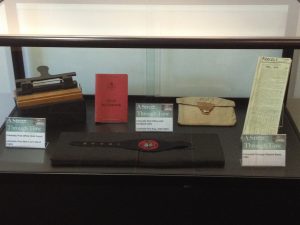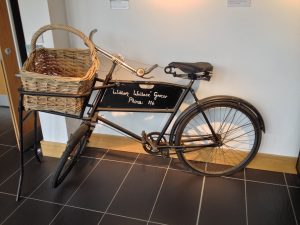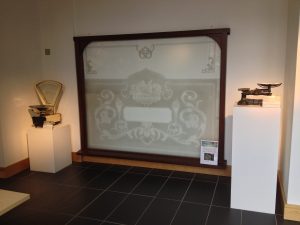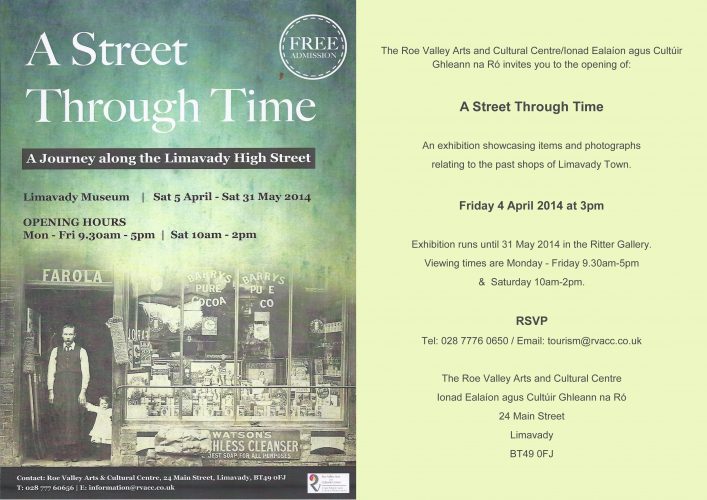Introduction to a Street Through Time

Introduction to the Furrow and the Plough
15th March 2019
Introduction to Roe Valley Womens Institute
15th March 2019Introduction to a Street Through Time
A Street Through Time
A Journey along the Limavady High Street
There is a great importance in researching and recording the changes of our High Street and it is with this project that we hope to encourage people to reminiscence about the local town, the people who worked in it and the changes they have seen. This exhibition is merely a starting point of an ongoing larger project to gather more information and artefacts on the shops of Limavady. This exhibition has been developed to gather memories from those who ran and those who shopped at the traditional Butcher, Bakers and Greengrocer shops of the time and share views on what we have lost due to modern changes.
If you have any photographs, objects or written memories which you would like to share, Limavady Museum would be very keen to see them.
The beginnings of a High Street
In Northern Ireland the High Street began as a marketplace, a hub of social activity. The earliest buying and selling was carried out at these markets and fairs but by the late 18th
Century fixed shops and identifiable shop fronts were evident. These first began with adaptations to existing domestic properties but later a shop front design became important, particularly as a way to indicate a high class.
The Victorian era saw the creation of the High Street as we know it today. As more people moved into the cities, fewer were able to grow their own produce and began to rely on shops for food and other goods. Items for sale were often displayed outside the shops and some would have workrooms for making the products on sale.
During the late 18th and early 19th Century shop design was heavily influenced by the size of glass available, resulting in small pane windows but with the invention of plate glass in the 1830’s and the lifting of Glass Tax in 1845, larger pane windows became affordable.
By the early 20th Century, shops were high quality with curved glass, bell –shaped entrances with mosaic tiled floors and mahogany windows and doors.
During the 1930’s shop owners began to use the power of advertising and window displays to draw in customers. Good’s inside were displayed in glass cabinets and brands we’d recognise today
appeared. Tinned foods also began to grow in popularity.
During the Second World War, particularly once rationing began, shoppers would queue for hours outside shops if they heard food was available. Shop windows displayed posters about saving
food, fuel and goods and inside many shelves were empty. People had to register with most shops to be able to buy goods, making shopkeepers very important within the community.
These shops with their unique shop front designs make a significant contribution to the distinguishing character of our town and represent an important link with the social and cultural history of Limavady, as although the shops have changed ownership and appearance they are still reminders of the Georgian and Victorian buildings that once made up the Limavady High Street, highlighting that shops are worth conserving.
Market Street in 1901
These shops with their unique shop front designs make a significant contribution to the distinguishing character of our town and represent an important link with the social and cultural history of Limavady, as although the shops have changed ownership and appearance they are still reminders of
the Georgian and Victorian buildings that once made up the Limavady High Street, highlighting that shops are worth conserving.
| House No. | Occupant | Shop/Occupation |
| No.4
No. 6
No. 7
No.9
No. 10
No. 11
No. 12
No. 13
No. 15
No. 18
No. 19
No. 20
No. 21
No. 22
No.25
No. 26
No. 34
No. 37
No. 38
No. 39
No. 40
No. 41
No. 42
No.43
No. 44
|
Francis Coghlan
Annie Bryce
John McCloskey
William James Gallagher
Frances Shortt
Thomas Morrison
Samuel Loughery
David Jackson Donaghy
John Mullan
Isabella C Douglas
James Donegan
Mary Deens
Isabella Bryson
Thomas McDermott
Charles Gallagher
Sarah J McCloskey
William Crawford
Sarah McCloskey
Samuel Bloomfield
John Brehony
Samuel Cassidy
Catherine Hegarty
Mary Stevenson
Margaret Hunter
Mary McCooke
|
Clerk
Manageress of Public House
Provision Merchant
Flesher (Butcher)
Draper
Grocer
Merchant Grocer
Relieving Officer
Spirit Dealer
Unemployed
Woollen Draper
Shop Assistant
Fancy Goods Dealer
Caretaker
Car Proprietor
Unemployed
Clerk of Union
Publican
Merchant
Civil Engineer
Family Grocer and Hardware Merchant
Publican
Grocer
Produce Merchant
Confectioner |
Market Street in 2014
| House No. | Shop |
| No.1 & No.3
No.2
No.4
No.5, No. 7 & No.9
No.6
No. 8
No. 12
No.14
No. 15
No. 16
No. 16a
No. 17
No. 17e
No. 18
No. 19
No. 20 & No. 22
No. 21
No.23, No.25 & No.27
No. 24
No. 26
No. 28
No. 28a
No. 29
No. 30
No. 31
No. 32
No. 34
No. 35a
No. 35b
No. 36
No. 37
No. 38
No. 39
No. 40
No. 49
No. 51
No. 57
No.58 & No.59
|
Supervalu
Finishing Touches Too
Barnardo’s
Hunters
New About Towne
Baldies Barbers
Foyle Hospice
Vogue
Gibson’s Pharmacy
Chic / The Little White Company
Lynns Boutique
Lucy Goose
Cuts Hairdressers
Card Factory
O2
Peacocks
Superdrug
Marshall Howe
J. McConnell
Limavady Printing Co. Cards & Gifts
Petits Amis
Trenz
Se7en
Supreme Cleaners
Bond Jewellers
Daniel Henry Estate Agents
McCloskey Meats
Hairport Unisex Salon
All Sewn Up
Red
Huey & Henderson
Limavady Travel
Tara
M.S.Jewellers
Wigwam
Chaps Subzero
Wisteria Lane
John Paul
|
To view the exhibition panels and other resources click here https://niarchive.org/resources/?fwp_project=limavady-a-street-through-time






